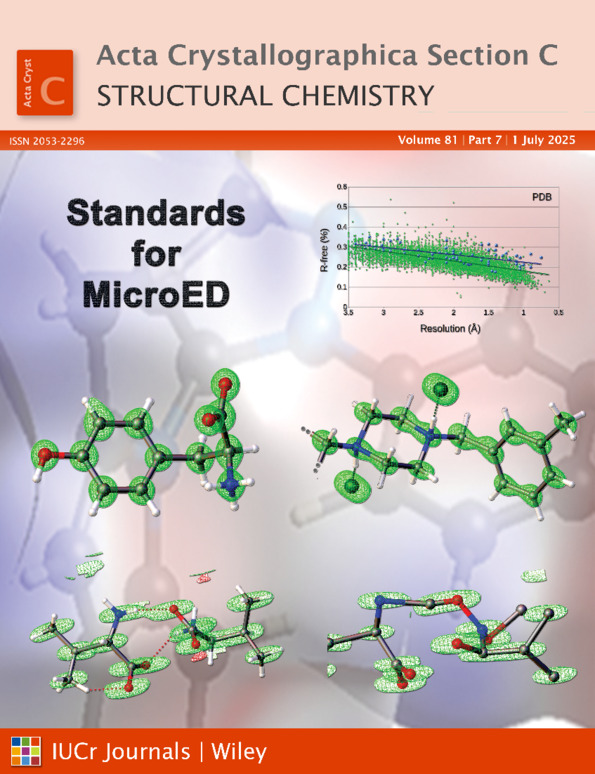Investigation of the third-order nonlinear optical properties of a cobalt(II) complex constructed from 4,4′-oxydibenzoic acid and 4,4′-(1H-pyrazole-3,5-diyl)dipyridine
Abstract
A novel mononuclear cobalt(II) complex, diaquabis[4-(4-carboxyphenoxy)<!?up><!?tlsb><!?down>benzoato-κO]bis{4-[3-(pyridin-4-yl)-1H-pyrazol-5-yl]pyridine-κN}cobalt(II), [Co(C14H9O5)2(C13H10N4)2(H2O)2] or [Co(Hoba)2(bpp)2(H2O)2] [H2oba 4,4′-oxydibenzoic acid and bpp is 4,4′-(1H-pyrazole-3,5-diyl)bipyridine], was successfully synthesized via a hydrothermal approach. In this compound, the central CoII atom exhibits a hexacoordinate octahedral geometry. The complex molecules are interconnected through hydrogen-bonding interactions, constructing a three-dimensional supramolecular framework. UV–Vis absorption spectroscopy revealed two distinct absorption bands at 274 and 367 nm. The third-order nonlinear optical properties were investigated using Z-scan measurements. The results demonstrated pronounced negative refraction behaviour with a nonlinear refractive index n2 of −1.47 × 10−12 m2 W−1 and a third-order susceptibility χ(3) of 5.62 × 10−7 esu. These remarkable optical characteristics suggest that this cobalt(II) complex is a potential candidate for advanced photonic applications demanding high-performance third-order nonlinear optical materials.




